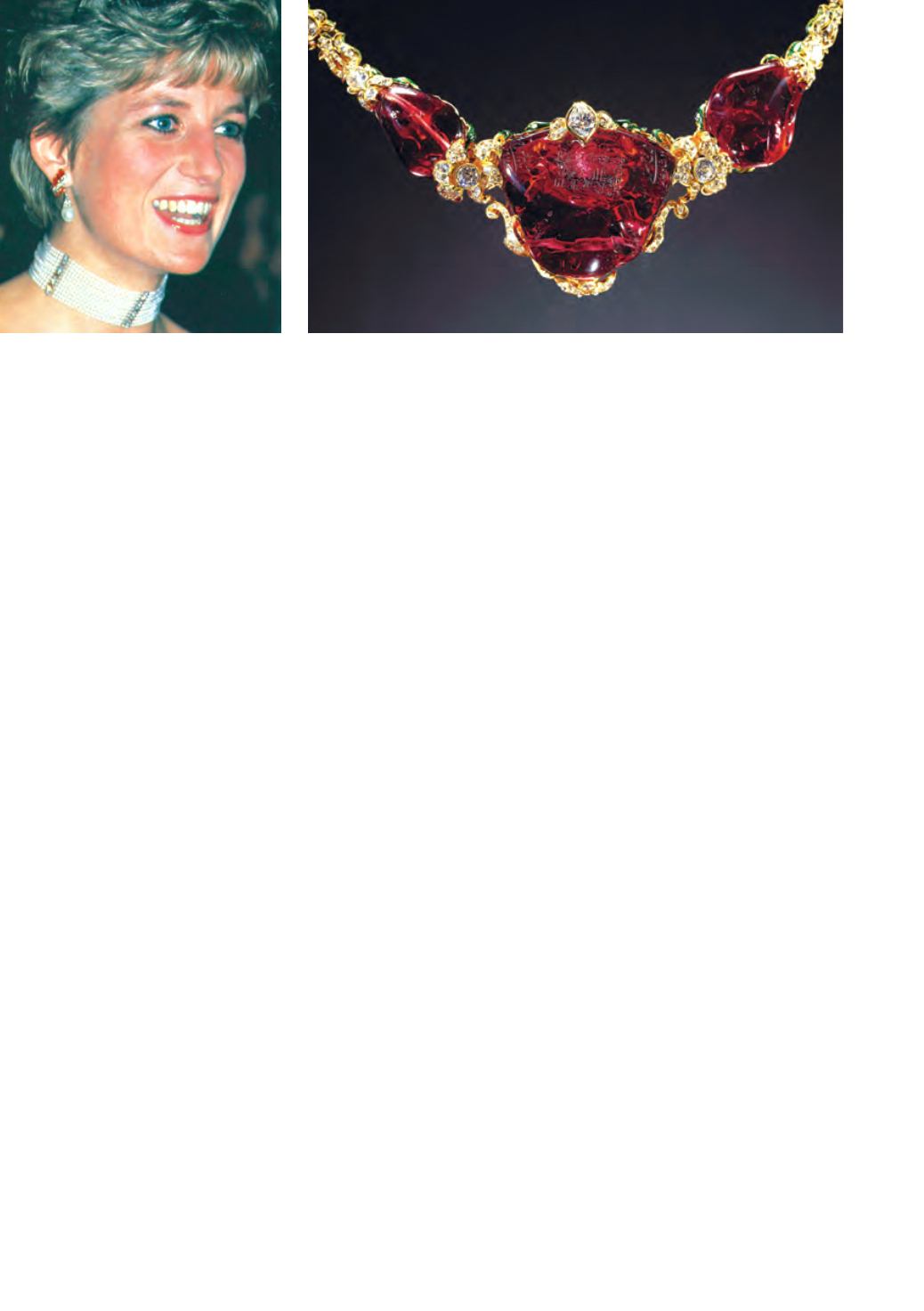
34
WINTER | 2014
RCI.co.za
RUBIES IN HISTORY
he first recorded transport and trading
of rubies appears in the literature on the
North Silk Road of China, which states
that, in about 200 BC, rubies were carried
along this ancient route moving westward from
China.
To the ancients, the ruby represented integrity,
devotion, happiness, healing, courage, romance,
generosity, inspiration, and prosperity. If ground
to a fine powder and placed on the tongue, it was
believed by some cultures to cure blood diseases,
stop bleeding, ensure good health, bring peace,
and treat indigestion. They were used to ornament
armour, scabbards, and harnesses of noblemen
in India and China and, rubies were often laid
beneath the foundation of buildings to secure
good fortune to the structure. In Myanmar,
warriors inserted rubies into their flesh in order to
make them invincible in battle.
Throughout India, Myanmar, and Sri Lanka a
ruby is thought to guard its wearers from the
attacks of enemies, reveal the presence of danger
or poison by changing colour or losing brilliance,
a belief also common throughout Europe. In fact,
Catherine of Aragon, King Henry VIII’s first wife,
is reported to have possessed a ring set with a
ruby that indicated the approach of misfortune.
The ruby retained its importance with the birth
of the western world and became one of the most
sought-after gems of European royalty and the
upper classes.
FAMOUS RUBIES
eld by the Smithsonian's National
Museum of Natural History, the
Carmen Lúcia
, a 23.1 carat Burmese
ruby was donated by businessman and
philanthropist Peter Buck in memory of his late
wife Carmen Lúcia.
The
Liberty Bell Ruby
is the largest mined ruby in
the world. It was stolen in a heist in 2011 and has
never been recovered.
The
Delong Star Ruby
weighs 100.32 carats and
in 1964 was the object of an infamous burglary,
carried out by Jack Murphy. The stone was
ransomed for $25,000 and recovered from a phone
booth in Florida.
The
Hixon Ruby Crystal
is a 196.10-carat gem
that was donated by Frederick C. Hixon and is
considered to be one of the most perfect large ruby
crystals in the world.
The
Mogok or Alan Capland Ruby,
a
15.97-carat untreated Burmese stone was
t
h
Princess Diana wearing rubies
The Timur Ruby is set into a necklace


